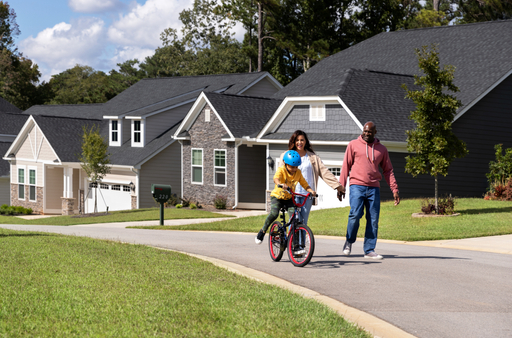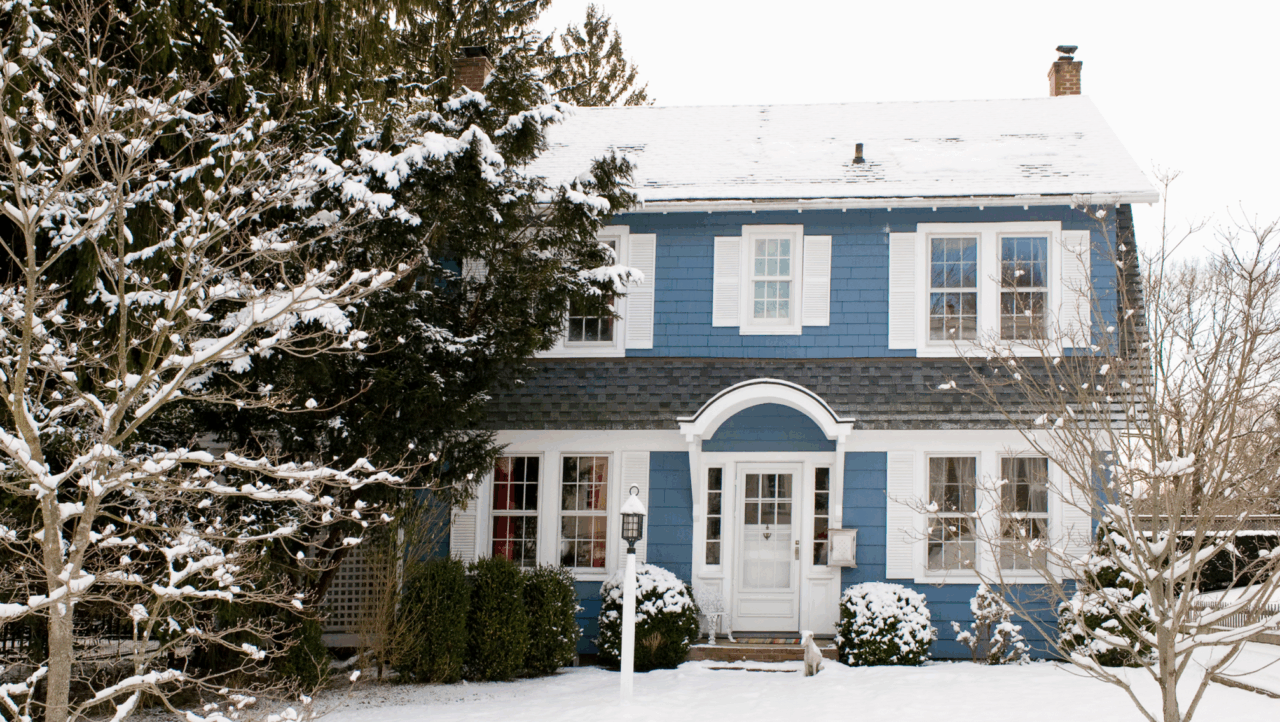New Construction vs Existing Homes: The Pros and Cons of Both


Written by Susan Kelleher on May 19, 2025
Key takeaways
- A new construction is a new house, while an existing home has had previous owners.
- New construction homes offer modern layouts, energy efficiency, and customization options; but the closing process may take longer due to build time and potential delays.
- Existing homes are move-in ready and often come with a lower-price point, but may be outdated in comparison and need more repairs or maintenance.
In today’s housing market, it’s natural to want to be open to every type of home that catches your eye. If that means you’re on the fence between the fresh start of a newly built home or the charm of a pre-owned one, we get it: each option has its own set of benefits and challenges.
A new construction home is exactly what it sounds like–a brand new house that’s never been lived in. You can buy new construction at a conceptual design stage or a home that’s already been built in a community. On the other hand, an existing home has a history, with previous owners who have made it their own.
While most homes on the market are pre-owned, the appeal of newly built homes is on the rise. Zillow research in 2024 found that a majority of prospective home buyers who intend to buy a home in the next year preferred new construction, with 52% saying they were more or only interested in new construction. Meanwhile, the research found that 63% of buyers who actually bought a home in the previous 12 months, said they prefer existing homes.
To help you decide between new construction and existing homes, here are some key factors to consider.
Benefits of new construction
A fresh start
When you move into a brand-new house, you get to create your own history and make it uniquely yours from the very beginning. There are no previous owners or lingering memories, which can be especially comforting if you’re looking to start a new chapter in your life. You also don’t need to worry about sinking money into fixing previous maintenance blunders or undoing home renovations.
Modern and customizable
In general, newly built homes have more modern layouts. Depending on what stage of construction you’re buying, you can either have total control over the layout or choose from options offered by the builder. For example, if you’re buying in the early phases of a new home community, you may have the opportunity to work with the builder to create a location or layout that works for your life. You may be able to customize everything from what direction your home faces to get the best views, to where it sits on the lot for optimal privacy. Generally, rooms in new construction homes — especially bedrooms and bathrooms — tend to be larger and brighter, with lots of natural light.
Personalized finishes
You may be able to choose specific finishes or upgrade finishes from builder-grade materials if you connect with the builder before construction is completed. It may cost you a bit more, but adding your own personal touches may be worth it to you.
Energy efficiency
New smart appliances and home systems are more energy efficient. And more efficient insulation and windows create buttoned up homes that are less expensive to heat and cool than older models. All of that translates into lower utility bills.
Smart technology
Smart technology options that allow you to automate internet, cable, speakers and even an alarm system are often built into new homes, saving you the trouble and cost of updating an older home to include these features.
Sales incentives
Builders typically offer incentives and promotions that can make home buying less expensive. Incentives are more common in buyers’ markets, and include paying for closing costs and temporary or permanent mortgage rate buydowns, and free or discounted upgrades. Some of those incentives, however, can be tied to in-house financing. In 2024 and 2025, builders also have negotiated on price, waived lot premiums and offered home warranties.
Lower maintenance/replacement costs
A newly built home typically requires less maintenance or replacement costs since everything from appliances to the HVAC system and roof are brand new. This means you can better predict monthly homeownership costs, since you’ll likely spend less to maintain your home outside of the normal maintenance required of any home.
Builder warranties
Many newly built homes have builder warranties that can protect components of your new home for years before you need to undertake any major repairs.
Amenities in new home communities
Buying new construction often means buying a lifestyle. Master or planned communities often include amenities like parks, pools and community spaces that are close to schools and transit.
Caters to buyers who value flexibility
The time needed to complete new construction can provide some breathing room if you don’t need to move quickly. According to the National Association of Home Builders, an industry group, a new home can take anywhere from 6 to 12 months to construct. Design complexity, the availability of materials and labor, and even the weather can affect the timeline. You can put an offer on a house that hasn’t yet been built or is in the early stages of construction, and then move in when it’s ready. The timeline doesn’t work for every buyer, so you may have less competition if your moving timetable is flexible.
Potential drawbacks of buying new construction
Potentially higher costs
The price gap between a new home and an existing one has been closing in recent years, but the typical new construction home is still more expensive than its existing counterpart. According to Zillow research, the median price of an existing U.S. home in February 2025 was $398,400, while the price of a new home that same month was $439,000. On a square foot basis, however, new construction can be cheaper. Zillow research in 2024 found that new homes sold for $3.50 less per square foot than existing homes.
Difficult to visualize
In theory, if you’re buying a home that you can’t tour in person because it hasn’t been built yet, it might be challenging to picture what it’s like to actually live there. To help solve for this, many builders on Zillow upload detailed floor plans and 3D tours of their model homes, both staged and unstaged, allowing you to get a realistic sense of the space and layout. Some builders also let you take advantage of in-person tours at builder sales centers or live digital tours. These tools can help you make an informed decision and get a better feel for what your future home will be like.
Possibly longer commute
New construction of detached single-family homes tends to happen outside urban areas, where bare land is more plentiful and less expensive. More remote locations could make for longer commutes to urban job centers. And depending on the location, it could make for longer hauls to grocery and hardware stores, and other amenities such as dining, arts and entertainment. However, in urban areas, you may find new construction apartments, townhomes, and even a few single-family homes closer to culture hubs.
Lack of mature landscaping
New landscaping takes years to grow. Landscaping around a home in a new subdivision where earth has been cleared to make way for homes and yards can feel stark and exposed until plants and landscaping features bring life to the property.
More waiting and risk of delays
If you’re looking at new homes that have been completed, this isn’t a factor. But if you’re building a custom home or signing up for a home during the construction phase, it could take several months longer than moving into an existing home. The amount of time will vary by market and builder, so you’ll want to consider budgeting time for potential delays.
Read more: If you’re interested in new construction, read about the types of new homes, the steps to building a custom home, and tips for buying a brand new home.
Benefits of existing homes
Move in-ready
It's less likely that you'll encounter surprises that delay your move-in date after the sale closes. Unless you’re buying a fixer-upper or plan to do extensive remodeling prior to moving in, you’ll be able to move in when you get the keys.
Established neighborhood
One of the pleasures of an established neighborhood is the maturity of the trees and landscaping, not only along the streets and in the parks, but also in your neighbors’ yards.
Lower-priced options
Existing homes tend to be less expensive than new construction. Given material shortages and inflation, those differences are likely to persist into the near future.
More location choices
Most new detached single-family homes are built outside urban areas. Buying an existing home typically gives you far more options when it comes to where to live.
Fewer decisions
Unless you’re buying a new home that’s already been completed, you’re likely to have to make decisions on what the home will look like. If you’re building a custom home, that can involve choosing everything from the floor plan to interior and exterior finishes and materials. An existing home allows you to focus on the areas that need sprucing up or that you want to customize to reflect your personal style and preferences. And those decisions don’t have to be made before you move in.
Architectural details and history
Older homes are more likely to have architectural details that would be hard and expensive to replicate. They also sometimes have great stories behind them that you become part of when you move in.
Potential drawbacks of buying existing homes
Outdated floor plans
The median-age of owner-occupied homes in the U.S. was 41 in 2023, with 48% of homes built before 1980, according to a 2023 report conducted by the U.S. Census Bureau. Unless a home has been remodeled or updated, you’re unlikely to find modern floor plans. In older homes, the kitchens and bedrooms, even the front rooms, were built for a different era that may not jibe with the kind of space you’re looking for. If you prefer an open floor plan, for example, new construction is more likely to have one.
Outdated technology and fixtures
Old homes can be extremely outdated when it comes to technology or even basics such as electric wiring. For instance, some homes still have knob and tube wiring that dates back to the early 20th century and poses an increased risk of electrical shock and damage. While it’s possible to upgrade wiring and install smart technology to replace old thermostats and lighting, it’s more costly to undo something and then redo it than to install it when the home is being built.
Energy inefficient
Older homes that have not been updated can be poorly insulated, and may require new windows and other energy-saving measures to keep heating and cooling expenses down. They also may rely on older forms of energy, such as oil, for heating.
Potential for more repairs and maintenance
Unexpected repairs to older appliances, roofing and heating systems can have you spending money where you didn’t expect to. Make sure you factor in the true cost of owning a home when weighing your options.
Read more: You can learn more about how to find your dream home and research different types of houses while considering the pros and cons of existing homes.
Ready to take the next step and find your perfect newly-constructed home? Find it on Zillow
Brand new and built for you
Get a turnkey, customized home with lower maintenance and a modern layout.
Browse new homesRelated Articles
Find a brand-new home
See floor plans, builder ratings and more when you search new construction on Zillow.
Start your search


